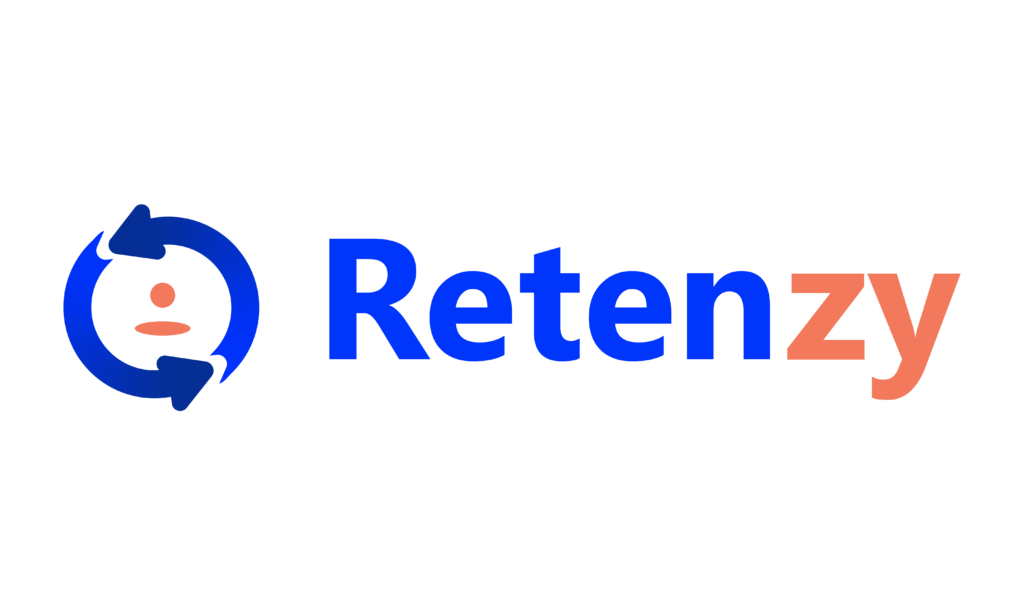Managing a business often feels like juggling numerous tasks, from attracting customers to boosting revenue. Cohort analysis helps you understand customer behavior over time by grouping them based on shared characteristics or actions. This allows you to track key patterns that impact metrics like retention, lifetime value, and conversion rates, enabling smarter, data-driven decisions for long-term success.
In this guide, we’ll walk you through 10 essential metrics to track in cohort analysis. These metrics will help you unlock insights to increase retention, improve customer lifetime value, and refine marketing strategies. By the end, you’ll have the knowledge to make informed decisions and optimize your business outcomes effectively.

User Retention Rate: Definition & Calculation
Definition & Calculation
User retention rate indicates the percentage of customers who continue to use your product or service over a defined time. It is calculated by dividing the number of users still active at the end of a given period by the total number of users who started using the product during that period.
- Retention Rate Formula: Retention Rate=(Number of Active Users at the Start of Period / Number of Active Users at the End of Period)×100
This formula calculates the percentage of users who remain active by dividing the number of users at the end of the period by the number of users at the start, and then multiplying by 100 to get the percentage.
Importance of Measuring Retention
Retention is important because maintaining existing customers is often cheaper than finding new ones; the analysis of customer retention often shows a correlation with customer satisfaction, product-market fit, and long-term growth. Retention analysis allows businesses to see how well they are keeping their customers engaged over time, and what can be done from those insights to optimize their strategies even further.
Strategies to Improve Retention
- Segmentation: By using cohort analysis, you can identify which user groups have higher retention rates. For example, users who onboard with a specific feature or campaign may have a higher retention rate.
- Personalization: Implement personalized experiences, such as tailored emails or product recommendations, based on user behavior to enhance the likelihood of long-term engagement.
- Onboarding Optimization: Identify friction points during the onboarding process and improve them to ensure users fully experience the value of your product.
Churn Rate
Definition & Calculation
Churn rate is the percentage of customers who stop using your product or service within a specific time frame. It’s often considered the inverse of retention rate. A high churn rate suggests that users are leaving faster than you can acquire them, which can significantly impact growth.
- Churn Rate Formula: Churn Rate=(Number of Customers at the Start of Period / Number of Lost Customers)×100
This formula calculates the percentage of customers lost during a specific period by dividing the number of lost customers by the number of customers at the start of the period, and then multiplying by 100 to express the result as a percentage.
Understanding Churn Rate
Churn can occur for several reasons, such as product dissatisfaction, high pricing, or better alternatives. Identifying the causes of churn and addressing them is critical to improving user retention.
How Cohort Analysis Helps
Cohort analysis allows you to track churn in specific user groups based on when they first interacted with your product. For example, you may find that users who joined during a particular campaign or time period tend to churn faster, signaling a need to tweak marketing or product offerings.
Strategies to Mitigate Churn
- Customer Feedback: Collect feedback from churned customers to understand why they left, and use this information to improve the product or service.
- Engagement Tactics: Send re-engagement emails or offers to users who show signs of disengagement before they churn completely.
Customer Lifetime Value (LTV)
Definition & Calculation
Customer Lifetime Value, or LTV, is the amount of money a customer is expected to make while being related to your business. Therefore, LTV can help estimate future revenues and use resources in a better manner.
- LTV Formula: LTV=Average Revenue Per User (ARPU)×Customer Lifespan
So, this formula estimates Customer Lifetime Value by multiplying Average Revenue Per User by Customer Lifespan. It is helpful to the business in estimating the total revenues that a customer will generate throughout his life with the company.
Importance of LTV
With LTV, businesses would understand the long-term value of a customer which is vital for budgeting or forecasting. Knowing how much revenue the customer brings during the whole of his lifetime makes it better for business to realign marketing and acquisition strategies towards high-value users.
Improving LTV with Cohort Insights
- Target High-Value Cohorts: These cohorts have higher LTVs, so develop loyalty programs or benefits around them so that they stay engaged longer.
- Cross-Sell & Upsell: Find ways to increase LTV through cross-sell or upsell with products shown to have high engagement levels within a customer.
Customer Acquisition Cost (CAC)
Definition & Calculation
Customer Acquisition Cost (CAC) measures the cost of acquiring a new customer, including marketing and sales expenses. A lower CAC is ideal as it indicates that you’re acquiring customers efficiently.
- CAC Formula: CAC=Number of New Customers Acquired / Total Marketing and Sales Expenses
This formula calculates the Customer Acquisition Cost (CAC) by dividing the total marketing and sales expenses by the number of new customers acquired during a specific period.
Why CAC Matters
Understanding CAC helps businesses assess the effectiveness of marketing campaigns and determine if their acquisition strategies are cost-effective. If CAC is too high relative to LTV, businesses risk unsustainable growth.
Cohort Analysis for CAC
With cohort analysis, you can assess how acquisition costs vary by different customer segments. For example, you may discover that customers acquired through organic search have a lower CAC compared to those acquired through paid ads.
Optimizing CAC
- Refining Channels: Focus marketing efforts on channels with the lowest CAC and highest customer lifetime value.
- Experiment with Acquisition Tactics: Use cohort analysis to evaluate different acquisition campaigns and identify which ones yield the best return on investment.
Conversion Rate Optimization (CRO) Metrics
Definition & Importance
Conversion rate indicates the percentage of visitors to a site or an app who complete an action they have desired to do-such as making a purchase or signing up for a newsletter. A conversion rate that is high indicates good targeting by marketing, as well as a simplicity and satisfaction brought about by the site for the users.
Tracking CRO with Cohorts
By cohort analysis of conversion rates (source, demographics, or behavior), firms can understand which groups yield the highest conversions and what elements are driving such conversions.
Improving CRO
- A/B Testing: Conduct an A/B test based on cohort insights to optimize user flows, landing pages, and CTAs.
- User Experience (UX): Fix any bugs in the user experience that could have hampered conversions for specific cohorts, e.g., mobile users would potentially need a more straightforward checkout process than their desktop counterparts.

Average Revenue Per User (ARPU)
Definition & Calculation
ARPU calculates the average revenue generated from each user; it helps a business realize how much revenue “each” user generates and starts being extremely relevant for subscription-based models.
- ARPU Formula: ARPU=Total Revenue / Total Number of Users
This formula calculates ARPU for a certain amount of time period against total revenue divided by total users against that period. It’s essential that any business be allowed to see what they earn from each user on average.
Importance of ARPU
ARPU provides a good view of a customer’s financial health and assesses whether increased pricing, churn reduction, or user engagement enhancement be superseded; each of them will improve overall revenues.
Tracking ARPU Across Cohorts
Functional cohort analysis can shed light on ARPU discrepancies from various customer groups. For instance, users located in specific geographical areas may bring in additional revenues owing to regional price levels or spending behaviors.
Improving ARPU
- Pricing Models:Test out pricing tiers or subscription plans with one another and how this affects the ARPU contained in the various cohorts..
- Enhance User Engagement: More engagement can allow users to spend more over time, hence, resulting in increased ARPU.
User Engagement Metrics Tracking
Definition & Importance
User engagement metrics can be described as measures of how actively users interact with your product or service. Those can be session duration, the frequency of logins, or the use of the specific features among others..
Why Engagement Matters
Increased user engagement usually means an increase in retention and LTV. Engaged users are likely to stay, spend, and become product advocates.
Cohort Analysis for Engagement
Engagement metrics, when analyzed by cohort, allow you to recognize what drives higher levels of engagement. In other words, if certain features are used more often, attrition rates are better.
Improving Engagement
- Feature Optimization: Focus on features that allow user engagement and stimulation; make it easy for users to find and use those..
- Gamification: Introduce elements such as badges or incentives, motivating users to interact more with your product.
Behavioral Metrics Analysis
Definition & Importance
Behavioral metrics center on the various actions performed by users, such as clicks, feature use, or user navigation patterns within the product itself. These metrics tell you how well users interact with your offerings.
Applications of Behavioral Data
Cohort analysis indicates which behaviors correlate with successful outcomes, i.e., higher retention or more purchases. So, by putting together behaviors of users, you can achieve more targeted marketing and product enhancements.
Improving Behavioral Insights
- Behavior-Driven Segmentation: Segment users based on actions to better tailor experiences and create targeted marketing campaigns..
- User Flow Optimization: Study user behavior patterns to spotlight tier-one and tier-two sources of friction in the user flows/give insights into their intentions.
Acquisition Cohorts Analysis
Why It Matters
Acquisition cohorts group users on how and when they were acquired. That will disclose the effectiveness of different acquisition strategies and allow you to understand which ones bring high-quality, long-term customers.
Optimizing Acquisition Strategy
- Refine Campaigns: Use cohort analysis to determine what acquisition channels lead to high-value customers.
- Timing Campaigns: Adjust marketing strategies based on the time users came on board, to better target and allocate resources.
Product Lifetime Metrics Evaluation
Understanding Product Usage
Product lifetime metrics are a set of metrics designed to aid companies in finding out how their customers are making a product over time considering aspects such as frequency and value in various product features.
Tracking Product Lifetime Data
Product usage trends can help identify users who are getting engaged for a longer time and find the reasons for long-term use, based on cohort analysis.
Improving Product Lifetime Metrics
- Feature Enhancement: Park your focus on features that keep your customers coming back and make improvements to the extent possible based on customer feedback.
- User Education: Keep on educating the users about new features and other best practices during the course of usage.
Conclusion
Cohort analysis is an incredibly powerful tool for making sense of user behavior and understanding customer preferences. It basically means you can analyze the 10 vital metrics mentioned above to get a comprehensive view of customer retention and acquisition, as well as general user engagement. This would go a long way in establishing an optimized approach that would help companies in creating tailored experiences for customers that would ensure brand loyalty over the longer run, driving business growth. Accept the cohort analysis and let the business drive better decisions towards greater success.














